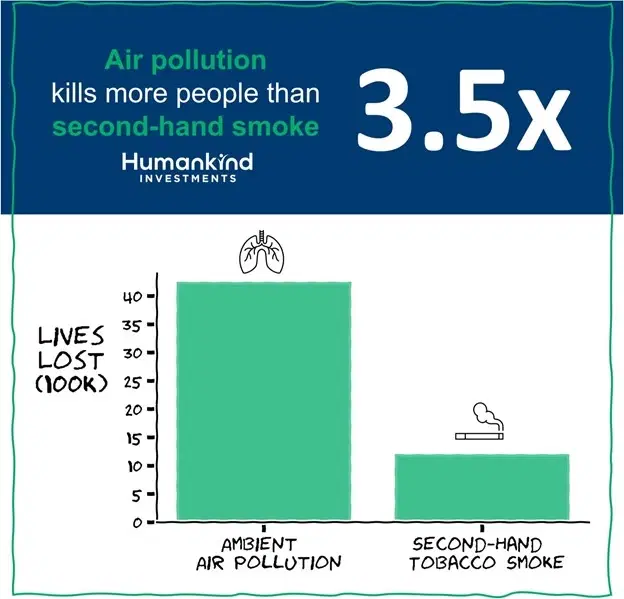What is Greenwashing and How to Spot it
6 min read

Greenwashing is the practice of claiming that a company or portfolio of companies is more green, sustainable, or ethical than it really is. With the recent rise in popularity of ESG (Environmental, Social, Governance) investing, many traditional investment firms have rushed to provide ratings and options to meet this new demand. Unfortunately, this rush does seem to have created some portfolios that are merely marketed as ethical as opposed to being truly ethical – and this has led to increasingly loud calls that some investment firms aren’t really doing the research on social responsibility – that they are merely greenwashing, and therefore misleading the public.
There are a few tricks that a discerning investor can use to figure out if greenwashing is likely to be happening in their portfolio at their investment firm. What follows is a list of questions about both your investment firm and your portfolio that can help you avoid greenwashing.
Is my investment firm exclusively focused on ethical investing?
If ethical investing is just one of many flavors of investing for your asset manager (including many traditional unethical options), it increases the likelihood that they are engaging in greenwashing. This is because an asset manager with traditional investment options alongside sustainable ones seems to not believe in its own ethical investing research. What these firms are essentially saying is: “We’ve figured it out: these are the good companies and these are the evil companies, and we only invest in the good companies in these few portfolios. But in all the rest of our business it’s business as usual: we invest in the same companies we just labeled as evil.” These mixed investment companies suffer from an authenticity problem. If they aren’t taking their own socially responsible investment research seriously, then why should you? Given the lack of a principled mission-driven ethos on the part of these mixed firms, it is more likely that they are not doing the real research into sustainability or social responsibility, or conducting themselves in a manner consistent with true ethical or green principles, and are therefore greenwashing.
Knowing the nature of the investment manager is a great shortcut to figuring out if greenwashing is likely going on. But there are also some portfolio level red flags that are important to watch out for.
Does my portfolio use a “best-in-class” approach?
One of the more popular approaches taken today, a best-in-class approach to ESG is a big red flag. Taking a best-in-class approach to ESG essentially means trying to invest in the most socially responsible companies in each industry. For example, as part of this best-in-class ESG portfolio you might invest in the best healthcare company, but also the best oil company, best tobacco company, and the best alcohol manufacturer etc. You get the idea. It kind of makes sense… if you care more about appearances than you do about social responsibility.
An extreme yet simple example reveals the fatal flaw with this approach. If the best-in-class approach to ESG investing were around in the 1700s, it could have allowed investing in the “best” slave trading company. “This company treats its slaves the best!” an ESG ratings analyst from that era might have said. “A+.” Clearly those aren’t the kinds of companies that would be included in a good faith effort to invest responsibly. This is, in our view, one of the more extreme forms of greenwashing because it is obvious that choosing the best apple from a pile of rotten apples still gives you a rotten apple.
Does my portfolio just use an “exclusion rule” approach?
This is one of the oldest and simplest approaches used when creating socially responsible portfolios. The basic idea is to simply manually exclude companies from the portfolio that have traditionally been considered “sin stocks” like alcohol, tobacco, gambling, and adult entertainment. Earlier versions of these portfolios may have been well-intentioned, and an exclusion rule approach is in some ways better than a best-in-class approach because it at least tries to some degree to avoid the rotten apples. However, the field of ethical investing has moved on from this simple negative screen approach. The state of the art today involves not merely excluding bad companies, but trying to proactively include good companies. With an exclusion rule approach (assuming the right rules have been chosen – see the next question) arguably only half of the picture is taken care of. This may not be intentional greenwashing in some cases, but it provides a woefully incomplete socially responsible investment portfolio.
Does my portfolio use a “have it your way” approach?
Another popular approach to ESG investing today is to simply let the client choose what issues they care about and then create a portfolio that matches those stated preferences. This approach can work, if the client has spent the required time doing all the research into all the relevant issues, methodically diving down each rabbit hole. However, more often than not, everyday investors are busy living their lives, going to work, focusing on their family and friends, and may not have the time to do all this socially responsible investment research. Investment managers that only provide a “have it your way” approach, are passing the buck on social responsibility research to a client that may not be properly prepared. Unprepared clients are led to believe that investing based on the issues that happen to be most top of mind for them constitutes a solution to the problem that they are trying to solve. Meanwhile they may be missing out on incorporating important issues that they hadn’t considered.
For example, take an investor who hates second hand tobacco smoke because of all the deaths that it causes. Their investment manager dutifully creates a portfolio for them that tries to incorporate this theme, and calls it a day. However, the investor may not know that while second hand tobacco smoke kills over a million people around the world each year, ambient air pollution kills about four million people each year, as illustrated in the chart below, according to the World Health Organization (1,2).

So if they hate second hand tobacco smoke, they should hate ambient air pollution about three and a half times more, and that issue should have proportionately more weight in their socially responsible investment portfolio. It’s actionable insights like these that requires real research into the issues, as opposed to simply creating a portfolio based entirely on a person’s gut feelings. Socially responsible investors’ gut feelings aren’t wrong – it led them to want to do the right thing when they invest. But when it comes to turning those feelings into a rational ethical portfolio, those short on time should look to an investment manager that tries to do this research on their clients behalf rather than one who turns around and essentially asks their clients to do the research for them.
Conclusion
Real, non-greenwashed, sustainable, socially conscious portfolios are more likely to be provided by investment firms that are exclusively focused on social responsibility. These true ethical portfolios will generally not make use of best-in-class methods, simple exclusion rules, or “have it your way” approaches. Instead, an investment firm with social responsibility in its DNA is more likely to dedicate the time and resources to take a quantitative approach that attempts to integrate all relevant issues and human impacts on your behalf.
References
1. World Health Organization (2019) Tobacco Fact Sheet. Retrieved from February 4, 2020, from https://www.who.int/news-room/fact-sheets/detail/tobacco.
2. World Health Organization (2016) Ambient Air Pollution Attributable Deaths. Retrieved June 21, 2021, from https://www.who.int/data/gho/data/indicators/indicator-details/GHO/ambient-air-pollution-attributable-deaths.
Get the latest posts in your inbox
I agree to the Terms of Use and acknowledge that I have read the Privacy Policy.